Tips on How To Make Your Doors More Burglar Proof
by Robert Fox
We are always afraid of being robbed when we own a home. Well, maybe not always, but sometimes, depending on our neighborhood and the crime rate in our city.
Sometimes we hear about a "rash" of burglaries and it can be a cause for concern. What no one wants to see when they walk into their home is this:
Contents

But we are not powerless here. So, we first ask: what is the most effective way to guard against burglaries? You probably have already installed a home security system with an alarm (if not, install one right away) and you may also have a dog on guard.
According to the U.S. Department of Justice, breaking or removing the front door is the most common form of forced-entry burglary. That's the main reason you should always lock these doors before leaving your home.
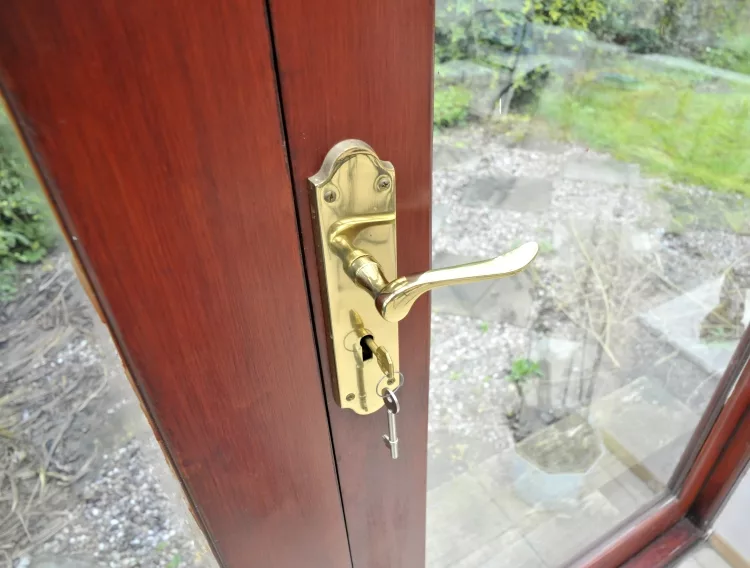
If you have already installed a sophisticated home-security system with an alarm, it would be very foolish to overlook the importance of making your doors burglar proof.
Here are our top no-cost and low-cost measures that you can implement right away in order to to make your doors more burglar proof. Here is what we are going to cover today:
Without further ado, let's see how you can make your doors more burglar proof.
Tips on How To Make Your Doors More Burglar Proof
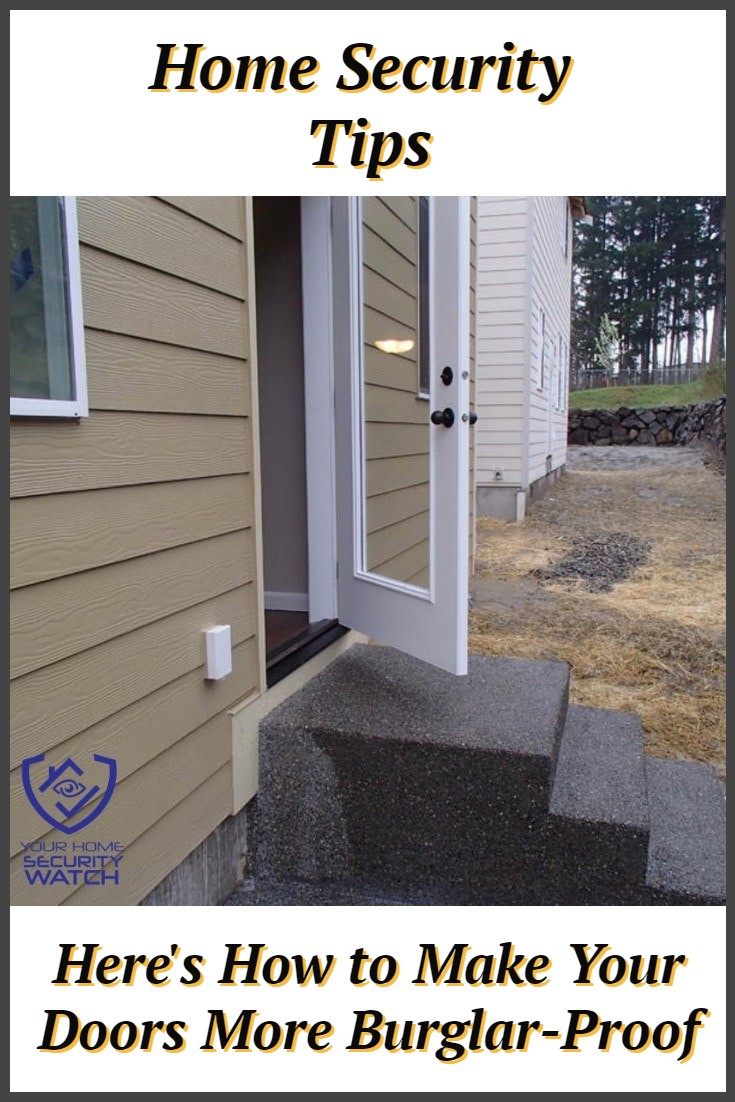
1. Check Your Door's Soundness
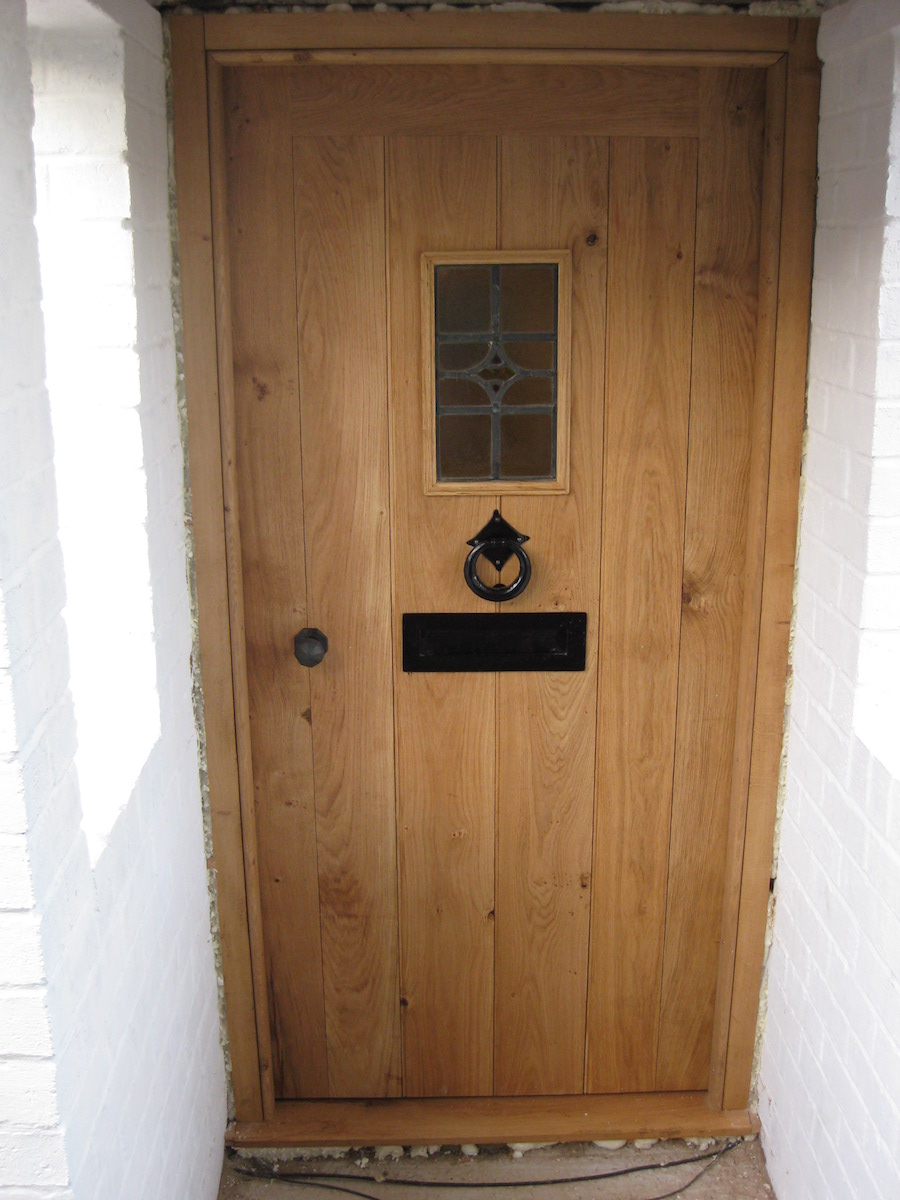
In other words,make sure your door is of good quality to begin with. If your front door and/or rear door are hollow, you must replace them immediately. How to know if your door is hollow? Just knock.
The hollow doors are made of some cheap material and then covered with varnish. All exterior doors must be solid and made of one of the following materials:
- fiberglass
- solid wood
- solid varnished wood
- metal (be sure to take a metal door that is reinforced inside, with a security lock.Otherwise, the door can be twisted out of its frame with a simple crowbar)
On to the next tip…
2. Consider an outward opening exterior door
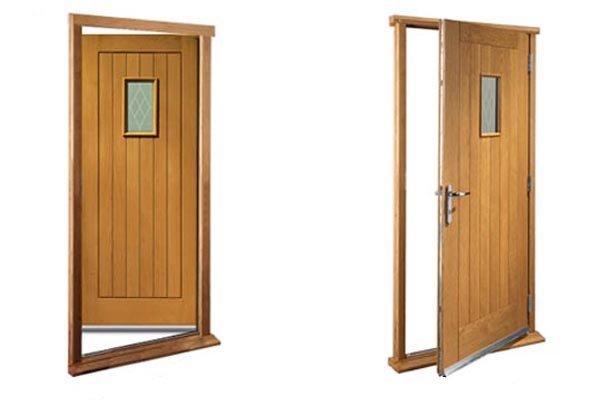
If you are installing a new door with a new frame, consider using a fiberglass door that opens outward rather than inward (and do not forget to use safety hinges).
Doors installed in this way are more resistant to burglary attempts, arguably (although some will debate it).
You might wonder, why are exterior doors usually designed to swing inward. There are a few reasons for this, such as the fact that doors are often welcome in guests, so a door that swings in your guests' faces isn't very welcoming.
The, there's the fact that if the door is blocked by anything, such as snow, it won't be able to open at all, unless you go around and shovel all the snow away.
Also, depending on how the door is installed, the hinges may be exposed and that poses a security risk, although there are more outswinging doors now where the mechanisms are protected and/or concealed.
In any case, this is an option worth considering, as the general idea with burglars is most of try to kick a door "in", rather than have to wrench it open.
So it's up to you, but feel free to ask your local home store rep or local fixit person what they think, just to get some more info on the prospect.
One of the most vulnerable entry points in your home are your patio doors. That's why it is important these doors are flawless. Stay with us to find out how to properly assess your patio doors for flaws.
3. Assess your patio doors for flaws

Consider replacing your patio doors with something more secure. Think about the fact that patio doors are often made out of a lot of glass, and thin wood.
The least you can do is replace the glass with glass that people can't see in. Or, if you want to take it up a notch, replace your patio doors entirely with something that burglars aren't going to be able to just waltz right in.
You'll be trading beauty and elegance for security, which isn't always as attractive, so sometimes a happy medium is in order. We obviously can't tell you that you should be barricading yourself inside, but doors - especially patio doors - are generally weak spots on your home in terms of security.
Also, you should watch out for windows that are near to your doors as well.
- If you have sliding patio doors, patio door panels, or windows near doors, you can protect the glass with a security grill on the outside or with an unbreakable polycarbonate plate on the inside.
Ok, the next tip is very simple - keep your doors locked!
4. Lock your doors
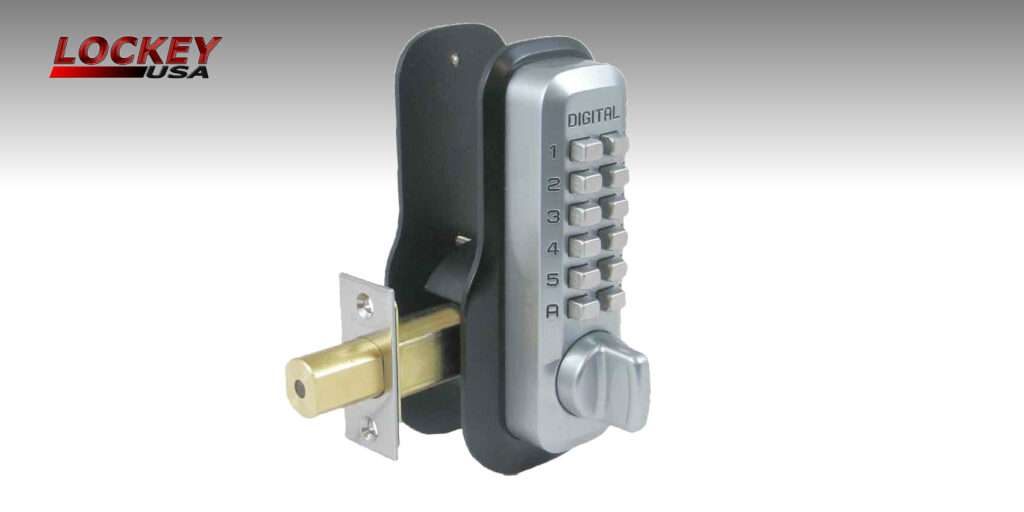
In a large portion of burglaries, the burglar enters the house through a door that has not been locked. Even the most elaborate lock is useless if you do not lock it. It is estimated that as at least 30 percent of burglaries don't involve a forced entry.
You can ward off many thieves by simply locking your door.
Close all exterior key doors and make sure they're locked every time you leave your house, even if only for a few moments. Remember that you're not living in Canada, where everyone apparently leaves their doors open at all times.
On to the next one…
5. Get deadbolts
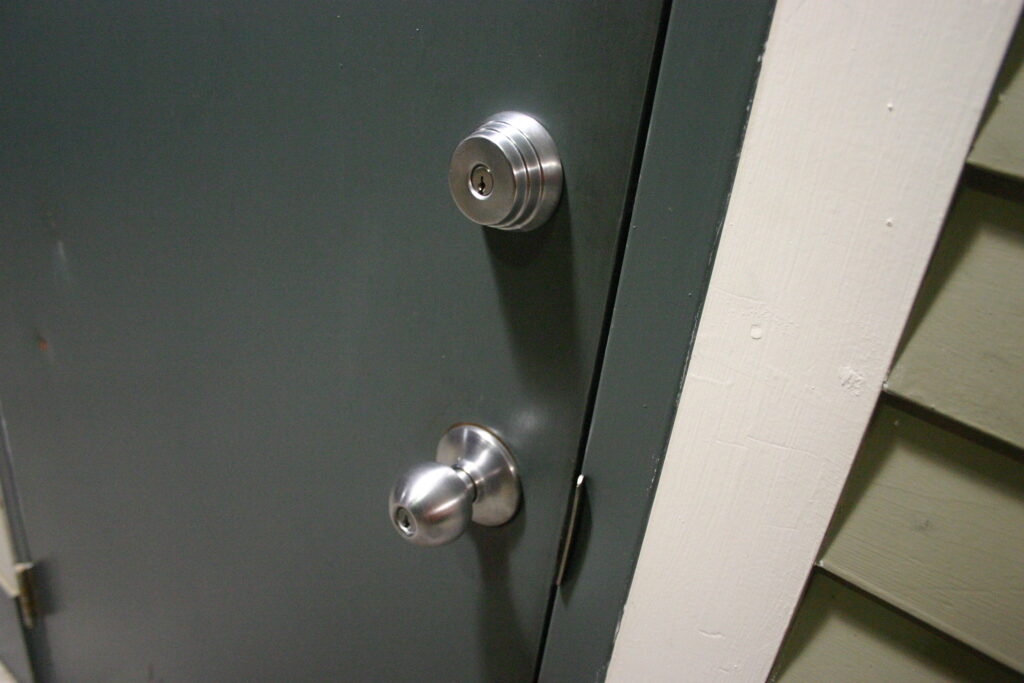
Install the best deadbolt lock you can get your hands on.
All exterior doors, except sliding doors, must have a deadbolt lock in addition to the normal lock. The deadbolt lock must be of good quality (level 1 or 2, made of solid metal and without visible screws), with an external lock (the protruding part) of at least 2 cm. The lock must be installed correctly.
Many houses are equipped with deadbolt locks of poor quality or that do not exceed 1 cm in length. Such locks must be replaced.
You will feel safer at home with two locks. The deadbolt lock is a lock that can not be opened from the outside. It can be visible from the outside and immunizes the door against any attempted break-in from the outside unless the criminal decides to break the door, the door frame or the lock.
This extra security measure will not make much difference if you're away from home, but the visibility of the lock may discourage potential burglars from trying their luck.
Watch this video by security and deadbolt kings Medeco, and see what a deadbolt can do for your family.
Next, we discuss how to secure sliding doors.
6. Secure all sliding doors
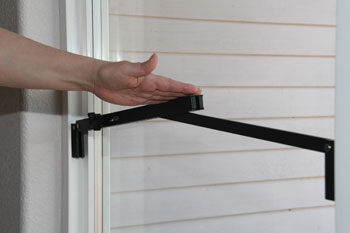
We mentioned them before, but let's talk about them some more. The best way to secure sliding doors is to lock keys at the top and bottom of doors.
You can also buy or make a security bar that extends from the door frame to the middle of the door to stop sliding the sliding door.
Put at least one heavy object (a wooden log, for example) on the sliding edge at the bottom to prevent the door from being opened from the outside.
Whichever method you opt for, it is always good to reinforce the glass with a polycarbonate plate, as already mentioned above.
Moving on…
7. Strengthen entryways
Install cylinder guards on the latch (where you put the key).
Burglars can sometimes remove or damage locks with a hammer or a crowbar or open them by hooking them.
Protect your locks with metal plates or protective rings that you must put on both sides of the door. Secure the metal plates with round bolts so that they can not be unscrewed by the burglars.
By putting removable rings around the cylinders, you prevent burglars from using a pipe clamp to pull out the cylinder. Some locks are already equipped with removable rings, but if yours are not, you can still get them.
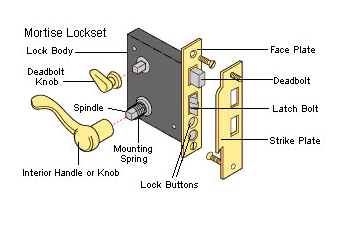
On to the next tip on our list…
8. Check your strike plates
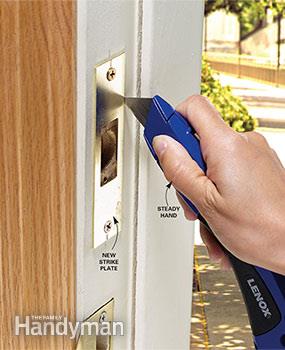
Replace your strike plate. The strike is the metal plate that surrounds the lock (the hole in the door where the lock is inserted). All your exterior doors must be equipped with a heavy safety strike, secured with four 8 cm screws.
Many houses have doors with low quality locks or strikes that are attached only to the frame of the door and not to the solid part of the door, located below.
Next, we discuss how to secure your doors' hinges.
9. Secure Exposed hinges
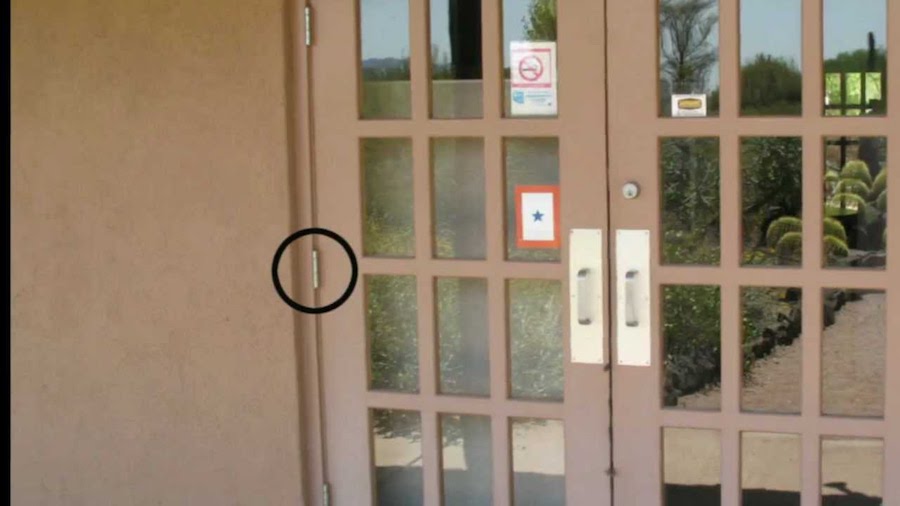
Secure your exposed hinges. The hinges should be on the inside of the door. If your hinges are outdoors, replace them or secure them with non-removable dowels.
To do this, you can replace the two central hinge screws (on both sides) with non-removable hinge pins (found in any hardware store) or with double masonry nails. Even unexposed hinges must be secured to the frame with 8 cm screws.
On to the next one…
10. Strengthen door frames
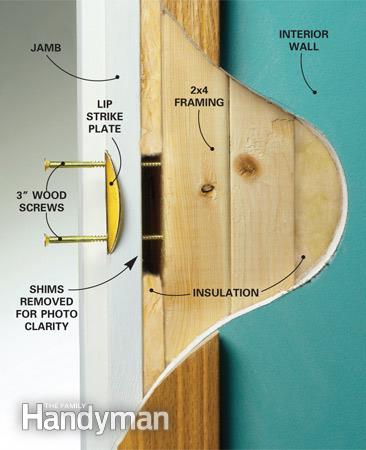
Strengthen your door frames. Even if your door is of good quality and resistant, with locks that have been installed correctly, burglars can still try to enter your home by breaking or twisting the door frame.
Most door frames are simply stuck to the wall. You can easily remove them with a crowbar or with a big kick. Secure your door frames by attaching them with several 8 cm screws, placed along the door frame. The screws must sink into the wall itself.
On to our last tip…
11. Consider getting peepholes
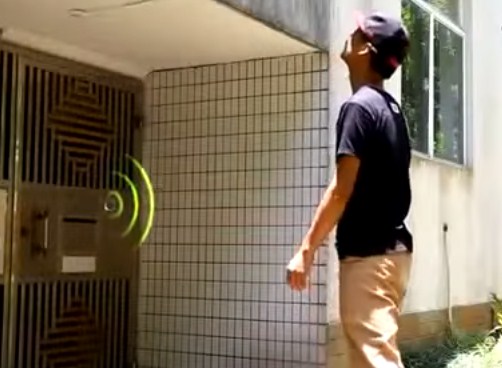
Install eyelets. The eyelets, also called "door peepholes", allow you to see who is on the other side of the door. Install eyepieces with wide perspective at eye level on all your exterior doors. If you have to open the door to see who is behind, your locks are useless. Try to find carnations with a blanket that prevents people outside to see inside, such as peepholes at a meaning.
Here are some additional information on increasing security around doors.
Additional Tips for Increasing Security around Doors

- Garage doors are particularly easy to open. You must therefore take the same measures with your garage door as with your front door. Also, lock your car when it is in your garage and do not let your keys wander for the front door in your car or garage.
- Do not "hide" your keys under the doormat, behind a plant or in other places like this. Even if you hide your keys very well, the burglar always has a good chance to find your keys, since they spend a lot more time thinking about where people would hide their keys than you do.
- We recommend you do not separate from your keys. If you have to leave your keys outside, put them in a secure box installed well out of sight of passersby.
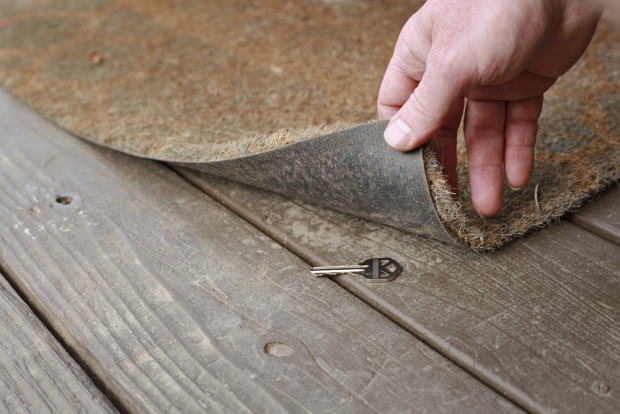
- Observe your neighborhood by telling yourself that professional burglars usually choose to tackle the easiest targets first. So always try to have a security system which is a little more advanced than those of your neighbours.
- When placing a bar behind a sliding door, make sure it is a PVC, wood or aluminum bar. Avoid steel bars as they can be moved with strong magnets. PVC, wood or aluminum bars will better withstand the burglar. Once he has noticed the resistance of your installation, he will go for an easier target.
- Install a surveillance camera. Even one or two cheap cameras can discourage a potential burglar. You can set them to send the filmed images directly to your computer or mobile phone. You'll find some of the best models of outdoor surveillance camera reviewed here on this website
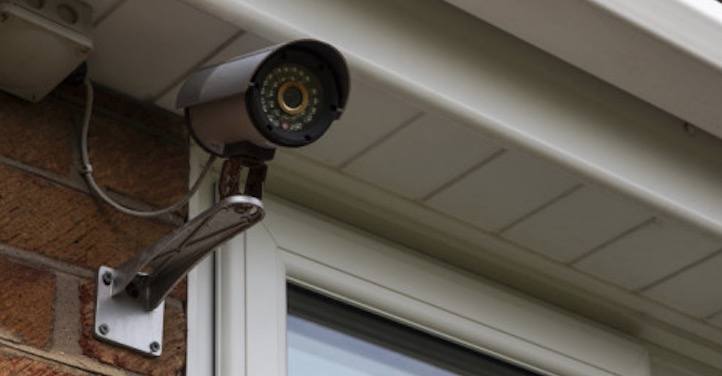
- If you add a second locked door behind your front door, burglars will find it even more difficult to enter your home because they will have to break two doors. The installation of such a thing also allows you to block access to the best place to attack your front door. There are also doors that look like gates and are called security doors. These doors must be equipped with deadbolts. The appearance of these doors is not to everyone's taste. There are also laminated glass door frames designed to stay in place even if they are broken in one place, such as a windshield.
- When securing your locks, gently tilt your screws so they fit well into the door frame.
- Doors and locks must be maintained. A poorly maintained door is easier to force. In particular, make sure that the sliding door rails are in good condition and that the sliding door stays in the slide when you move it.
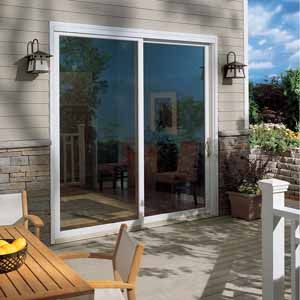
- Most single burglaries take place by day, you might be surprised to know. To protect you in the evening and at night, we also recommend installing lamps or security lighting around your house to light the night. Solar lights can do the job, and they're relatively inexpensive. If your house looks hard to rob, criminals will go elsewhere.
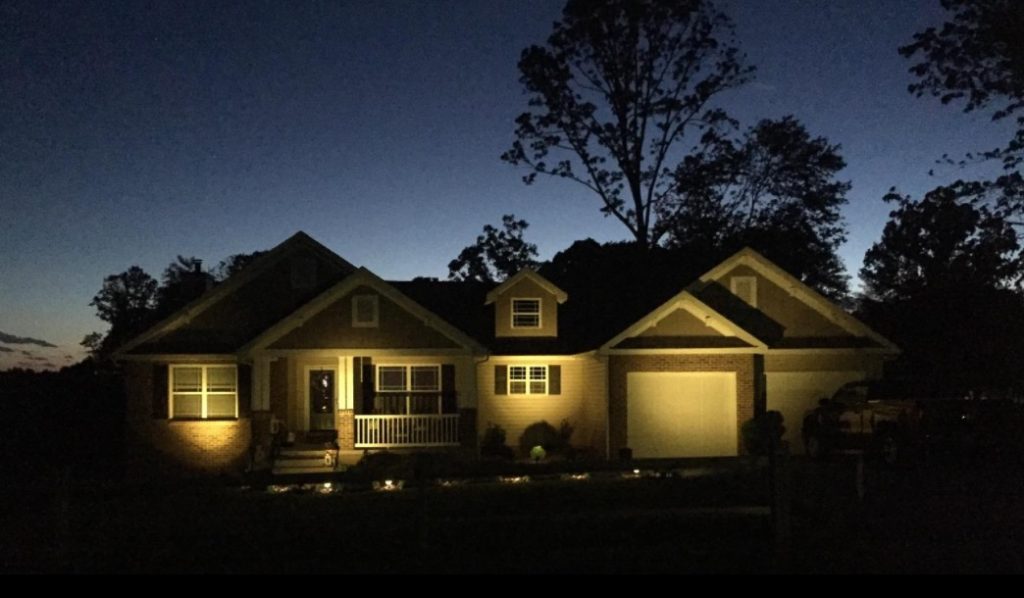
- We have so far mentioned many different ways to fortify your home and your doors especially, but do not make your house a complete fortress, if only for the following reason. Firefighters use hand tools to enter homes when called for an emergency or fire. Even though these tools often allow them to enter houses fairly easily, they often need to be able to enter in another way, for example through a window. Do not barricade yourself too much.
- You can buy a metal security door to add in front of your front door for even more security.
- You can buy either one-cylinder locks or two-cylinder locks. A two-cylinder lock opens with a key on both sides, while a one-cylinder lock can only open with a key on one side. The two-cylinder locks therefore better protect you, especially if there are windows not far from where a burglar could pass a hand to open the door from the inside. Check that local fire-fighting laws allow you to install two-cylinder locks. Also remember that you must always know where your key is so you can leave your home. It can be a problem if you are in a hurry!
- In addition to the safety strike, you can also insert a reinforced bar 20 cm long in the frame of the door, in extension of the deadbolt, to fortify your door even more.
- Be sure to have a strike with a metal edge to prevent a burglar from forcing entry with a metal pin inserted in the lock. You can also buy protections specifically designed to counter this type of attempted break-in.
The locks, as strong as they are, are useless if they are not locked. It often happens that you forget (or feel it is not necessary) to lock the door when you leave the house. If this happens often, consider installing a deadbolt lock that closes from the outside, even without the key. - If you are not used to locking your doors and have a door that locks itself when closed, be careful not to forget your keys when you leave the house. You may be locking yourself out two or three times, but you will end up remembering them. Leave a duplicate of your keys to a neighbor or tell the neighbor that you are hiding your keys in a well-hidden place rather than leaving them in a hiding place easy to find near your front door.
- Even the strongest locks do not help if the door frame is fragile. Make sure your door frames are solid.
- Avoid paranoia. It is natural to want to protect your family and property, but do not turn your home into a high security prison. Whatever steps you take, you always risk being robbed at one time or another. Do not let this ruin your life.
- Two-cylinder locks, even if they are safer, can be dangerous in case of fire, because without your key, you can not leave your home. In some municipalities, it is forbidden to install this kind of locks. Think about these risks before installing these locks.
- It is relatively easy to pick a lock if you know how to do it, even if it is a deadbolt lock. Medeco locks are very difficult to crochet, but they are quite expensive.
Thank you for reading, we hope you got some good tips from this article!
Related posts on Burglar Proof
- Schlage Vs Weiser Locks
- We Review The Best Door Security Bars and Jammers
- Kwikset 909 SmartCode Electronic Deadbolt Review
 |
 |
 |
 |

About Robert Fox
Rob Fox is a former hydro worker who used to teach self defence in Miami for 10 years. He's currently enjoying his retirement, playing cribbage and golf with his buddies, locksmithing and home security in his spare time. Rob is an avid reader, and has even written a few books on the subject of self defence.
Thoughts on "Tips on How To Make Your Doors More Burglar Proof"
 |
 |
 |
 |
Check These Out
You can Get FREE Gifts. Furthermore, Free Items here. Disable Ad Blocker to receive them all.
Once done, hit anything below
 |
 |
 |
 |